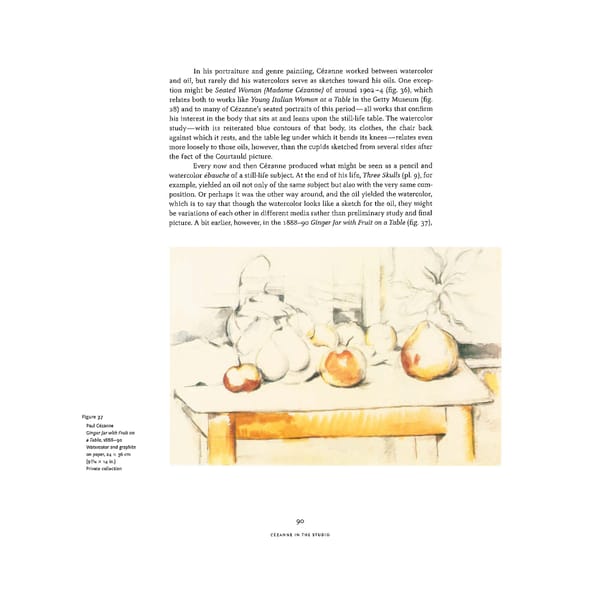In his portraiture and genre painting, Cézanne worked between watercolor and oil, but rarely did his watercolors serve as sketches toward his oils. One excep- tion might be Seated Woman (Madame Cézanne) of around 1902-4 (fig. 36), which relates both to works like Young Italian Woman at a Table in the Getty Museum (fig. 28) and to many of Cezanne's seated portraits of this period—all works that confirm his interest in the body that sits at and leans upon the still-life table. The watercolor study—with its reiterated blue contours of that body, its clothes, the chair back against which it rests, and the table leg under which it bends its knees—relates even more loosely to those oils, however, than the cupids sketched from several sides after the fact of the Courtauld picture. Every now and then Cézanne produced what might be seen as a pencil and watercolor ébauche of a still-life subject. At the end of his life, Three Skulls (pi. 9), for example, yielded an oil not only of the same subject but also with the very same com- position. Or perhaps it was the other way around, and the oil yielded the watercolor, which is to say that though the watercolor looks like a sketch for the oil, they might be variations of each other in different media rather than preliminary study and final picture. A bit earlier, however, in the 1888-90 Ginger Jar with Fruit on a Table (fig. 37), Figure 37 Paul Cézanne Ginger Jar with Fruit on a Table, 1888-90 Watercolor and graphite on paper, 24 x 36 cm (97/ie x 14 in.) Private collection 90 CÉZANNE IN THE STUDIO
 Cézanne in the Studio: Still Life in Watercolors Page 104 Page 106
Cézanne in the Studio: Still Life in Watercolors Page 104 Page 106